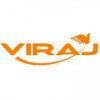Filter interviews by
Jindal Stainless Technician 1 Interview Questions and Answers
Jindal Stainless Technician 1 Interview Experiences
1 interview found
(1 Question)
- Q1. Type of valve check valve, flow control valve butterfly valve ball valve
- Ans.
Check valve, flow control valve, butterfly valve, and ball valve are all types of valves used in various industries.
Check valve: Allows flow in one direction and prevents backflow.
Flow control valve: Regulates the flow rate of a fluid in a system.
Butterfly valve: Uses a disc to control flow by rotating it within the valve body.
Ball valve: Uses a ball-shaped disc to control flow by rotating it within the valve body.
Top trending discussions






Interview questions from similar companies

(4 Questions)
- Q1. MELTING FURNACE
- Q2. MACHINE OPERATOR
- Q3. ABOUT SAFETY and precautions
- Q4. TOOLS and equipment


(1 Question)
- Q1. Types of gearbot and their parts
- Ans.
Gearbots are machines that use gears to transmit power and motion. There are various types of gearbots with different parts.
Types of gearbots include spur gear, helical gear, bevel gear, worm gear, and planetary gear.
Parts of gearbots include gears, shafts, bearings, housings, and lubricants.
Spur gears are the most common type and have straight teeth that mesh together.
Helical gears have angled teeth that create a smoo...
(1 Question)
- Q1. As per your experience
Interview Preparation Tips
@jsw steel plant @

I applied via Naukri.com and was interviewed in Apr 2022. There was 1 interview round.
(2 Questions)
- Q1. Micrometer accuracy is
- Q2. What is fitter and it's explain
- Ans.
A fitter is a skilled technician who assembles, installs, and repairs machinery and equipment.
Fitters work with various tools and equipment to ensure proper functioning of machinery.
They read and interpret blueprints and technical drawings to assemble and install components.
Fitters perform routine maintenance and repairs to keep machinery in optimal condition.
Examples of fitters include pipefitters, millwrights, and ma...
Interview Preparation Tips
- Measuring instruments,files,drills
- Cutting tools, marking tools,lathes
- Metals, forging,welding riveting
- Heat treatment
- Grinding
- Power saws

(2 Questions)
- Q1. Tell me about yourself?
- Ans.
I am a dedicated and experienced technician with a passion for problem-solving and attention to detail.
I have a degree in Engineering and 5 years of experience in troubleshooting and repairing electronic devices.
I am skilled in using various diagnostic tools and equipment to identify and fix technical issues.
I have a proven track record of meeting deadlines and exceeding customer expectations.
I am a quick learner and a...
- Q2. Previous experience?
- Ans.
I have 5 years of experience working as a technician in a manufacturing company.
5 years of experience as a technician in a manufacturing company
Proficient in troubleshooting and repairing equipment
Skilled in following technical manuals and diagrams
Experience with calibration and maintenance tasks
Familiar with safety protocols and procedures

I applied via Company Website and was interviewed in Nov 2024. There was 1 interview round.
(5 Questions)
- Q1. Electrical motor pm
- Q2. Hi Mac tower lighting
- Q3. Panel maintenance
- Q4. Himansh tower lighting
- Q5. Motor pm registence value
Interview Preparation Tips

I appeared for an interview in Jun 2022.
(3 Questions)
- Q1. What is the inner diameter of ball bearing 1212
- Ans.
The inner diameter of ball bearing 1212 is 12 mm.
The inner diameter of ball bearing 1212 is a measurement of the distance across the center of the bearing's inner ring.
It is typically expressed in millimeters (mm).
In the case of ball bearing 1212, the inner diameter is 12 mm.
- Q2. Which bearing uses in I'd fan?
- Ans.
The bearing used in an ID fan is typically a ball bearing.
ID fans in industrial applications often use ball bearings for their high load capacity and durability.
Ball bearings are designed to handle radial and axial loads, making them suitable for the rotating shaft of an ID fan.
Other types of bearings, such as roller bearings or sleeve bearings, may also be used depending on the specific requirements of the ID fan.
- Q3. How to measure clearance of bearing in dia?
- Ans.
The clearance of a bearing in diameter can be measured using a micrometer or a dial gauge.
Use a micrometer or a dial gauge to measure the diameter of the bearing.
Measure the diameter at multiple points around the bearing to ensure accuracy.
Subtract the measured diameter from the specified or nominal diameter to calculate the clearance.
Clearance can be positive (when the measured diameter is smaller than the specified d...
Interview Preparation Tips

Interview Questionnaire
5 Questions
- Q1. 30 hp ki motar kina current legi
- Ans.
A 30 hp motor typically draws around 30-35 amps at full load, depending on voltage and efficiency.
A 30 hp motor operates at approximately 22.4 kW at full load.
At 230V, it may draw around 130 amps; at 460V, about 65 amps.
Efficiency and power factor affect actual current draw.
For example, a motor with 90% efficiency at 460V would draw about 72 amps.
- Q2. 3 phase ko ek shath mila de to kya hoga
- Ans.
3 phase ko ek shath mila dene se phase imbalance, voltage drop aur equipment damage ho sakta hai.
Phase imbalance se equipment ki efficiency kam ho sakti hai.
Voltage drop se motor ya generator ki performance affect hoti hai.
Isse electrical fires ya short circuits ka khatra badh sakta hai.
Example: Agar ek phase zyada load le raha hai, to dusre phases par load kam hoga.
- Q3. Kw or kva me kya antar hai
- Ans.
KW (kilowatts) measures real power, while KVA (kilovolt-amperes) measures apparent power in electrical systems.
KW represents the actual power consumed by a device.
KVA is the product of voltage and current without considering the phase angle.
For example, a 1 KW load at unity power factor equals 1 KVA.
In systems with reactive power, KVA will be greater than KW.
The formula is: KW = KVA × Power Factor.
- Q4. Mccb or mcb me kya antar hai
- Ans.
MCCB and MCB are circuit protection devices; MCCB is for higher currents, while MCB is for lower currents.
MCCB (Molded Case Circuit Breaker) is used for higher current ratings, typically above 100A.
MCB (Miniature Circuit Breaker) is designed for lower current ratings, usually up to 100A.
MCCBs provide adjustable trip settings, allowing customization based on load requirements.
MCBs automatically trip to protect against o...
- Q5. Transformer ke output me input supply ko jod diya jaye to kya hoga
- Ans.
Jab transformer ke output me input supply jodi jaye, to system me short circuit ya damage ho sakta hai.
Transformer ka output voltage input voltage se alag hota hai.
Agar input supply output se jodi jaye, to circuit overload ho sakta hai.
Isse transformer ya connected devices ko nuksan ho sakta hai.
Example: Agar 220V ka input 12V ke output se jod diya jaye, to transformer damage ho sakta hai.

I appeared for an interview in Aug 2024.
(4 Questions)
- Q1. What is the unit of resistance?
- Ans.
The unit of resistance is ohm.
The unit of resistance is measured in ohms (symbol: Ω).
Resistance is a measure of how much a material or component opposes the flow of electric current.
For example, a standard resistor may have a resistance of 100 ohms.
- Q2. How is 1 horsepower (hp) defined in relation to kilowatt-hours (kWh)?
- Ans.
1 horsepower is equivalent to 0.7457 kilowatt-hours (kWh).
1 horsepower is equal to 0.7457 kilowatts.
To convert horsepower to kilowatt-hours, you need to multiply by 0.7457.
For example, if a machine has a power rating of 100 horsepower, it would be equivalent to 74.57 kilowatt-hours.
- Q3. Star connection drawing
- Q4. Dol stature drawing
Interview Preparation Tips

I applied via AmbitionBox and was interviewed before Nov 2021. There were 3 interview rounds.

12%*100+20/5-10*2+30/10,
12345/1000-12.345
(5 Questions)
- Q1. What is unit of resistance?
- Ans. Om
- Q2. What is unit of length
- Ans.
The unit of length is a measurement used to determine the distance between two points.
Common units of length include meters, feet, and inches.
Length can also be measured in kilometers, miles, or centimeters.
The unit of length is important in fields such as construction, engineering, and physics.
- Q3. Formula of resistance
- Ans.
The formula for resistance is R = V/I, where R is resistance, V is voltage, and I is current.
Resistance is the measure of how much a material opposes the flow of electric current.
The unit of resistance is ohm (Ω).
Resistance can be calculated using the formula R = V/I.
For example, if the voltage is 12 volts and the current is 2 amps, the resistance would be 6 ohms.
- Q4. What is formula of speed ?
- Ans. Speed=distance/time
- Q5. What is unit of speed?
- Ans.
The unit of speed is meters per second (m/s) or kilometers per hour (km/h).
Speed is the measure of how fast an object is moving.
The SI unit of speed is meters per second (m/s).
Another commonly used unit of speed is kilometers per hour (km/h).
Other units of speed include miles per hour (mph) and feet per second (ft/s).
Interview Preparation Tips
Jindal Stainless Interview FAQs
Tell us how to improve this page.
Jindal Stainless Interviews By Designations
- Jindal Stainless Junior Engineer Interview Questions
- Jindal Stainless Associate Manager Interview Questions
- Jindal Stainless Assistant Engineer Interview Questions
- Jindal Stainless Executive Engineer Interview Questions
- Jindal Stainless Graduate Engineer Trainee (Get) Interview Questions
- Jindal Stainless Manager Interview Questions
- Jindal Stainless Technician Interview Questions
- Jindal Stainless Diploma Trainee Engineer Interview Questions
- Show more
Interview Questions for Popular Designations
Overall Interview Experience Rating
based on 1 interview experience
Interview Questions from Similar Companies
Jindal Stainless Technician 1 Reviews and Ratings
based on 1 review
Rating in categories
|
Associate Manager
1.2k
salaries
| ₹5.3 L/yr - ₹15.5 L/yr |
|
Junior Engineer
1.2k
salaries
| ₹2.2 L/yr - ₹5.9 L/yr |
|
Executive Engineer
725
salaries
| ₹4 L/yr - ₹11 L/yr |
|
Assistant Engineer
710
salaries
| ₹3.2 L/yr - ₹7.8 L/yr |
|
Manager
417
salaries
| ₹7.2 L/yr - ₹23.5 L/yr |

Tata Steel

JSW Steel

Jindal Steel and Power

ArcelorMittal Nippon Steel
- Home >
- Interviews >
- Jindal Stainless Interview Questions














